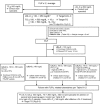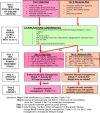Expert panel on integrated guidelines for cardiovascular health and risk reduction in children and adolescents: summary report
- PMID: 22084329
- PMCID: PMC4536582
- DOI: 10.1542/peds.2009-2107C
Expert panel on integrated guidelines for cardiovascular health and risk reduction in children and adolescents: summary report
Figures





References
-
- NCEP Expert Panel of Blood Cholesterol Levels in Children and Adolescents. National Cholesterol Education Program (NCEP): highlights of the report of the Expert Panel on Blood Cholesterol Levels in Children and Adolescents. Pediatrics. 1992;89(3):495–501 - PubMed
-
- Strong JP, Malcom GT, McMahan CA, et al. ; Prevalence and extent of atherosclerosis in adolescents and young adults: implications for prevention from the Pathobiological Determinants of Atherosclerosis in Youth Study. JAMA. 1999;281(3):495–501 - PubMed
-
- Berenson GS, Srinivasan SR, Bao W, Newman WP, III, Tracy RE, Wattigney WA. Association between multiple cardiovascular risk factors and atherosclerosis in children and young adults. The Bogalusa Heart Study. N Engl J Med. 1998;338(23):1650–1656 - PubMed
-
- Morrison JA, Friedman LA, Gray-McGuire C. Metabolic syndrome in childhood predicts adult cardiovascular disease 25 years later: the Princeton Lipid Research Clinics Follow-up Study. Pediatrics. 2007;120(2):340–345 - PubMed
-
- McMahan CA, Gidding SS, Malcolm GT, et al. Pathobiological Determinants of Atherosclerosis in Youth (PDAY) Research Group. Comparison of coronary heart disease risk factors in autopsied young adults from the PDAY Study with living young adults from the CARDIA study. Cardiovasc Pathol. 2007;16(3):151–158 - PubMed
Publication types
MeSH terms
Substances
LinkOut - more resources
Full Text Sources
Medical

